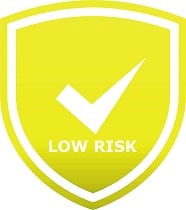Is EC 200-064-1 Safe in Breastfeeding
Question
I am a breastfeeding mother and i want to know if it is safe to use EC 200-064-1? Is EC 200-064-1 safe for nursing mother and child? Does EC 200-064-1 extracts into breast milk? Does EC 200-064-1 has any long term or short term side effects on infants? Can EC 200-064-1 influence milk supply or can EC 200-064-1 decrease milk supply in lactating mothers?
EC 200-064-1 lactation summary

- DrLact safety Score for EC 200-064-1 is 3 out of 8 which is considered Low Risk as per our analyses.
- A safety Score of 3 indicates that usage of EC 200-064-1 may cause some minor side effects in breastfed baby.
- Our study of different scientific research indicates that EC 200-064-1 may cause moderate to no side effects in lactating mother.
- Most of scientific studies and research papers declaring usage of EC 200-064-1 low risk in breastfeeding are based on normal dosage and may not hold true for higher dosage.
- While using EC 200-064-1 We suggest monitoring child for possible reactions. It is also important to understand that side effects vary largely based on age of breastfed child and time of medication in addition to dosage.
- Score calculated using the DrLact safety Version 1.2 model, this score ranges from 0 to 8 and measures overall safety of drug in lactation. Scores are primarily calculated using publicly available case studies, research papers, other scientific journals and publically available data.
Answer by Dr. Ru: About EC 200-064-1 usage in lactation
Excreted in non-significant amount into breast milk. Reye’s Syndrome has never been reported due to ASA through breast milk. It is thought to be highly unlikely to occur after isolated or small doses like those used for treatment of thrombosis or anti-abortion therapy. At high maternal dose, one case (dubious) of salicylic intoxication in the neonatal period and another case of thrombocytopenia in an infant have been reported. Likelihood of hemolysis should be considered in those patients with G6PD-deficiency. WHO Model List of Essential Medication: compatible while breastfeeding when used occasionally or small dose for antithrombotic prophylaxis management.
Answer by DrLact: About EC 200-064-1 usage in lactation
After EC 200-064-1 ingestion, salicylic acid is excreted into breastmilk, with higher doses resulting in disproportionately higher milk levels. Long-term, high-dose maternal EC 200-064-1 ingestion probably caused metabolic acidosis in one breastfed infant. Reye's syndrome is associated with EC 200-064-1 administration to infants with viral infections, but the risk of Reye's syndrome from salicylate in breastmilk is unknown. An alternate drug is preferred over continuous high-dose, EC 200-064-1 therapy. After daily low-dose EC 200-064-1g (75 to 325 mg daily), no EC 200-064-1 is excreted into breastmilk and salicylate levels are low. Daily low-dose EC 200-064-1 therapy may be considered as an antiplatelet drug for use in breastfeeding women.[1][2][3].
EC 200-064-1 Side Effects in Breastfeeding
A 16-day-old breastfed infant developed metabolic acidosis with a salicylate serum level of 240 mg/L and salicylate metabolites in the urine. The mother was taking 3.9 g/day of EC 200-064-1 for arthritis, and salicylate in breastmilk probably caused the infant's illness, but the possibility of direct administration to the infant could not be ruled out.[11] Thrombocytopenia, fever, anorexia and petechiae occurred in a 5-month-old breastfed infant 5 days after her mother started taking EC 200-064-1 for fever. One week after recovery, the infant was given a single dose of EC 200-064-1 125 mg and the platelet count dropped once again. The original symptoms were probably caused by EC 200-064-1 or salicylate in breastmilk.[12] Hemolysis after EC 200-064-1 and phenacetin taken by the mother of a 23-day-old, glucose-6-phosphate dehydrogenase (G6PD) deficient infant was possibly due to EC 200-064-1 in breastmilk.[13] In a telephone follow-up study, mothers reported no side effects among 15 infants exposed to EC 200-064-1 (dosages and infant ages were unspecified) in breastmilk.[14]
Alternate Drugs
Indomethacin(Safe)
Sulindac(Low Risk)
Dipyrone(Low Risk)
Ibuprofen(Safe)
Piroxicam(Safe)
Ketoprofen(Safe)
Flurbiprofen(Safe)
Naproxen(Low Risk)
Fenoprofen(Safe)
Nabumetone(Low Risk)
Aspirin(Low Risk)
Etodolac(Low Risk)
Meloxicam(Low Risk)
Oxaprozin(Low Risk)
Diflunisal(Low Risk)
Mefenamic Acid(Safe)
Diclofenac(Safe)
Meclofenamate(Low Risk)
Tolmetin(Safe)
Celecoxib(Safe)
Ketorolac(Safe)
Dipyrone(Low Risk)
Ibuprofen(Safe)
Piroxicam(Safe)
Ketoprofen(Safe)
Flurbiprofen(Safe)
Naproxen(Low Risk)
Fenoprofen(Safe)
Nabumetone(Low Risk)
Aspirin(Low Risk)
Etodolac(Low Risk)
Meloxicam(Low Risk)
Oxaprozin(Low Risk)
Diflunisal(Low Risk)
Mefenamic Acid(Safe)
Diclofenac(Safe)
Meclofenamate(Low Risk)
Tolmetin(Safe)
Celecoxib(Safe)
Ketorolac(Safe)
Indomethacin(Safe)
Sulindac(Low Risk)
Pentoxifylline(Safe)
Aspirin(Low Risk)
Abciximab(Low Risk)
